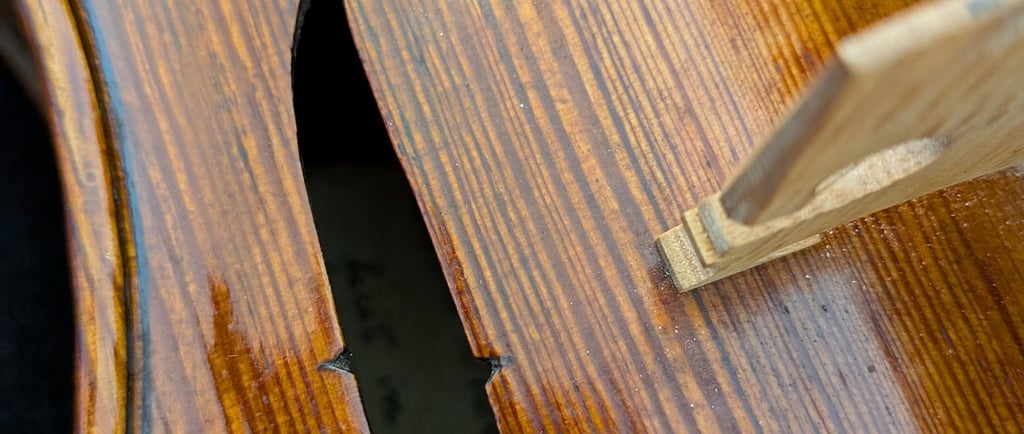5 Essential Tips for Beginner Violinists
What I wish I had known when I started playing
Abigail Cross
10/3/20253 min read


5 Essential Tips for Beginner Violinists
Starting to learn the violin at home can feel overwhelming. There's so much to think about! But don't worry. These five simple tips will help you build a solid foundation and actually enjoy your practice sessions.
1. Set Everything Up Properly
Before you even think about playing a note, make sure your instrument is ready to go. Tighten your bow, attach your shoulder rest, and check that all four strings are in tune. It might seem like a boring way to start, but playing on an out-of-tune violin is frustrating and won't help your ears develop properly. Think of this as your pre-flight checklist. Once everything's sorted, you're ready for takeoff.
2. Posture Is Everything
This one's huge. Really huge. Hold your violin over your left shoulder with the shoulder rest sitting comfortably on your shoulder and your chin resting gently on the chin rest. Stay relaxed! You should be able to look down your violin towards your left hand on the fingerboard without straining.
Now for your bow hand. Hold the bow with a relaxed hand, and here's the bit everyone forgets: bend your thumb. That bent thumb is crucial. Throughout your practice, keep checking back on these basics. It's so easy to let your posture slip when you're concentrating on playing the right notes, but maintaining good form now will save you from bad habits later.
3. Keep That Pulse Steady
Even when you're just playing long, slow notes, get into the habit of counting. Hold each note for four beats and feel that internal pulse ticking away. This might seem unnecessary when you're not playing fast passages yet, but trust me, it's building your musical foundation.
That inner timekeeping will become automatic over time, and when you start playing actual pieces, you'll have that solid sense of rhythm already in place. Count in your head, tap your foot if it helps, or even use a metronome. Just keep that pulse going.
4. Focus on Your Sound Quality
What does your violin actually sound like? Is it clear and singing, or scratchy and unclear? The key to good tone is in your bow. Make sure your bow is flat on the string, not tilted to one side. As you move the bow up and down, keep it travelling in a straight line. Don't let it drift over the fingerboard or wander about.
A mirror can be incredibly helpful here. Position it so you can see your bow arm whilst you play. You'll quickly spot if your bow is veering off course or if you're tilting it. Getting this right takes time and patience, but it makes such a difference to the sound you produce. Quality matters more than quantity when you're practising.
5. Remember, You're Making Music
With all the technical stuff to think about (violin position, bow hold, straight bowing, left hand fingers), it's easy to forget the most important thing: you're making music, not just sounds.
What's your piece trying to say? Is it happy and bouncy? Sad and reflective? Dramatic and intense? Even if you're just playing open strings or simple exercises, think about the emotion and character you want to convey. This is what transforms playing notes into actual music-making.
Don't let all the technical requirements make you forget why you started learning in the first place. You wanted to make beautiful music, and that starts from day one.
Bringing It All Together
Yes, there's a lot to juggle when you're learning the violin. But take it step by step. Start each practice session with these five points in mind: setup, posture, pulse, sound quality, and musicality. They'll become second nature before you know it.
The violin rewards patience and attention to detail. Some days will feel harder than others, and that's completely normal. Keep showing up, keep checking these fundamentals, and most importantly, keep making music.
Happy practising!
Watch the full video
Subscribe and check out my other videos!

Contact
© 2025. All rights reserved.